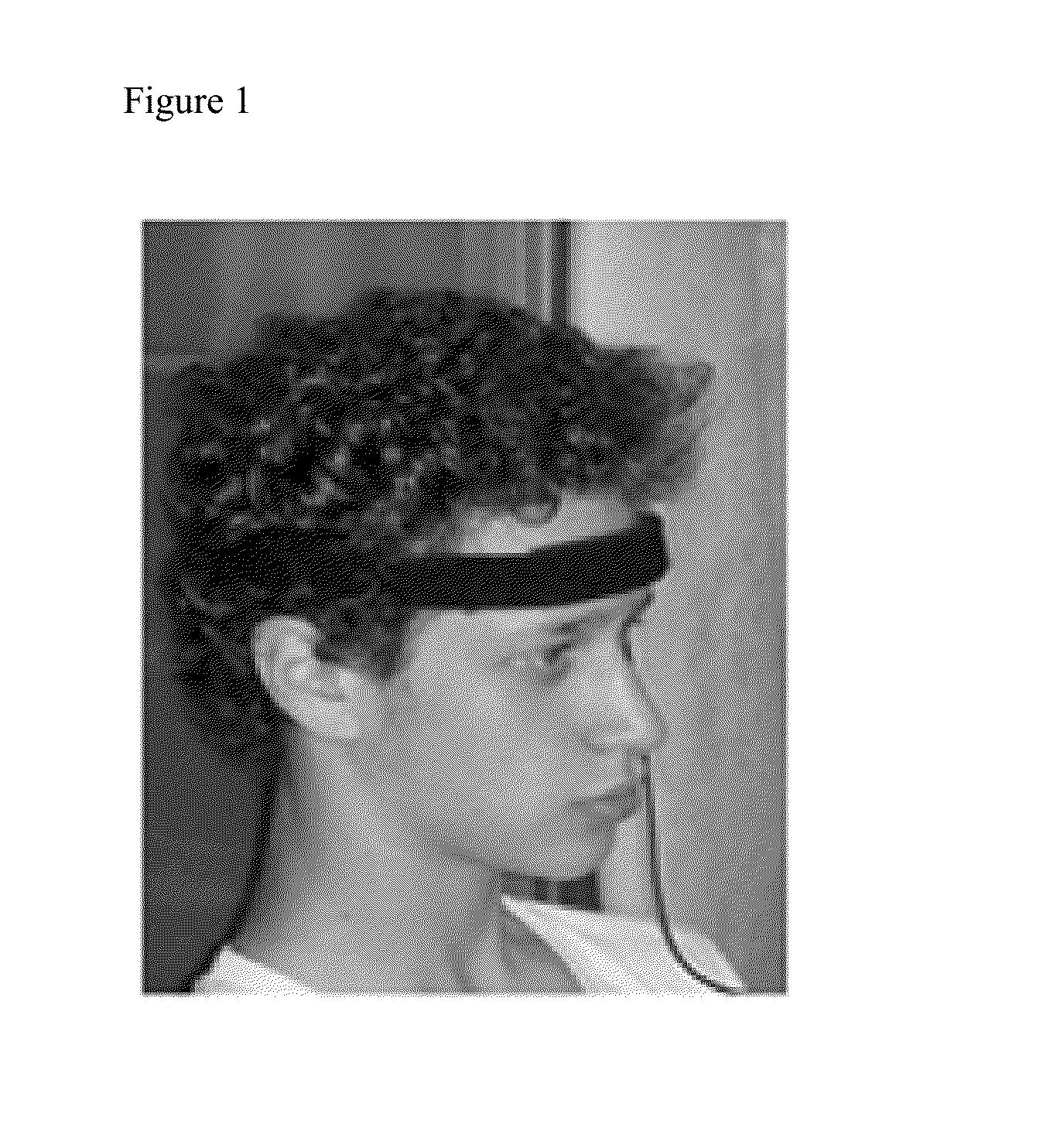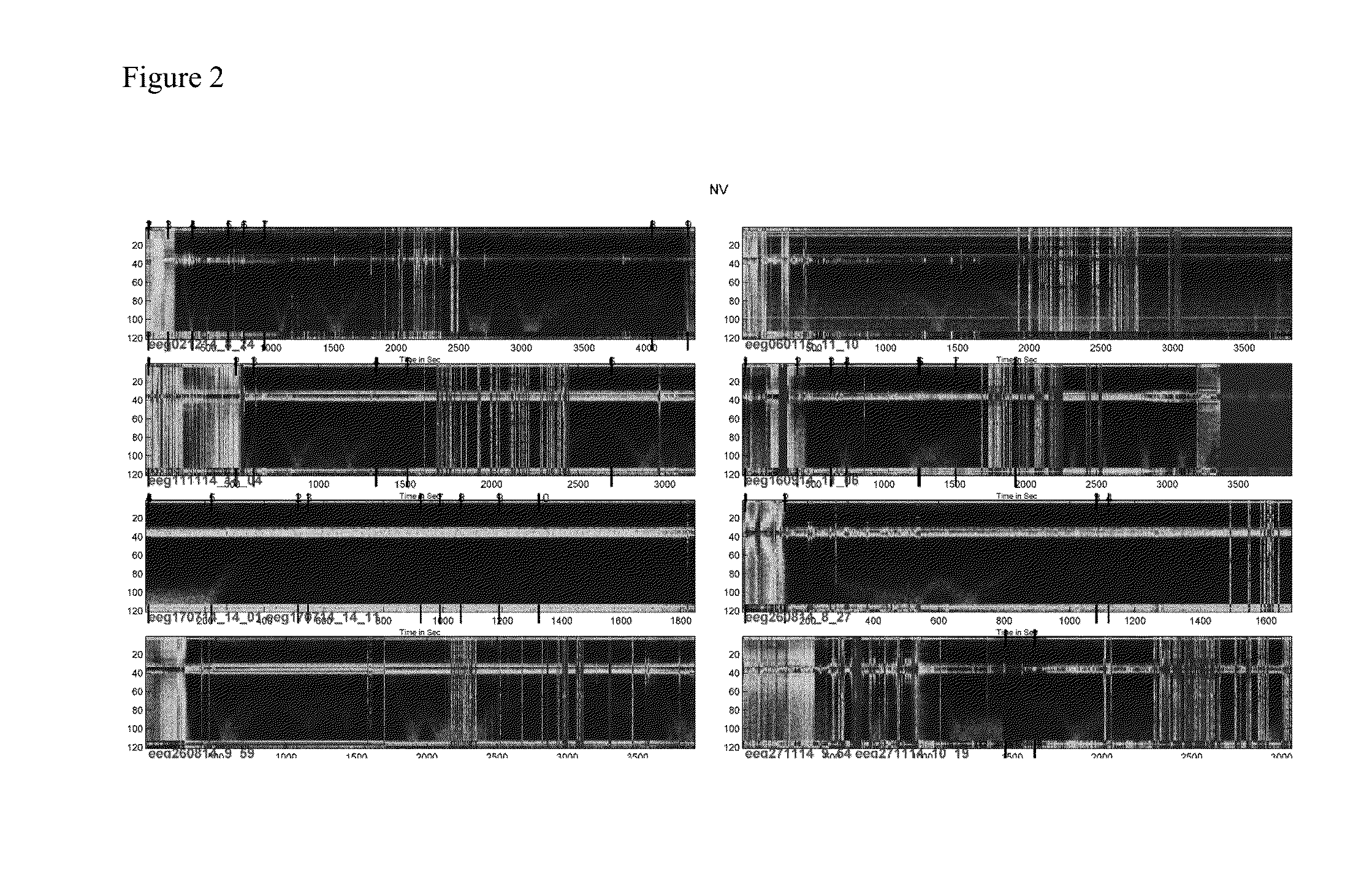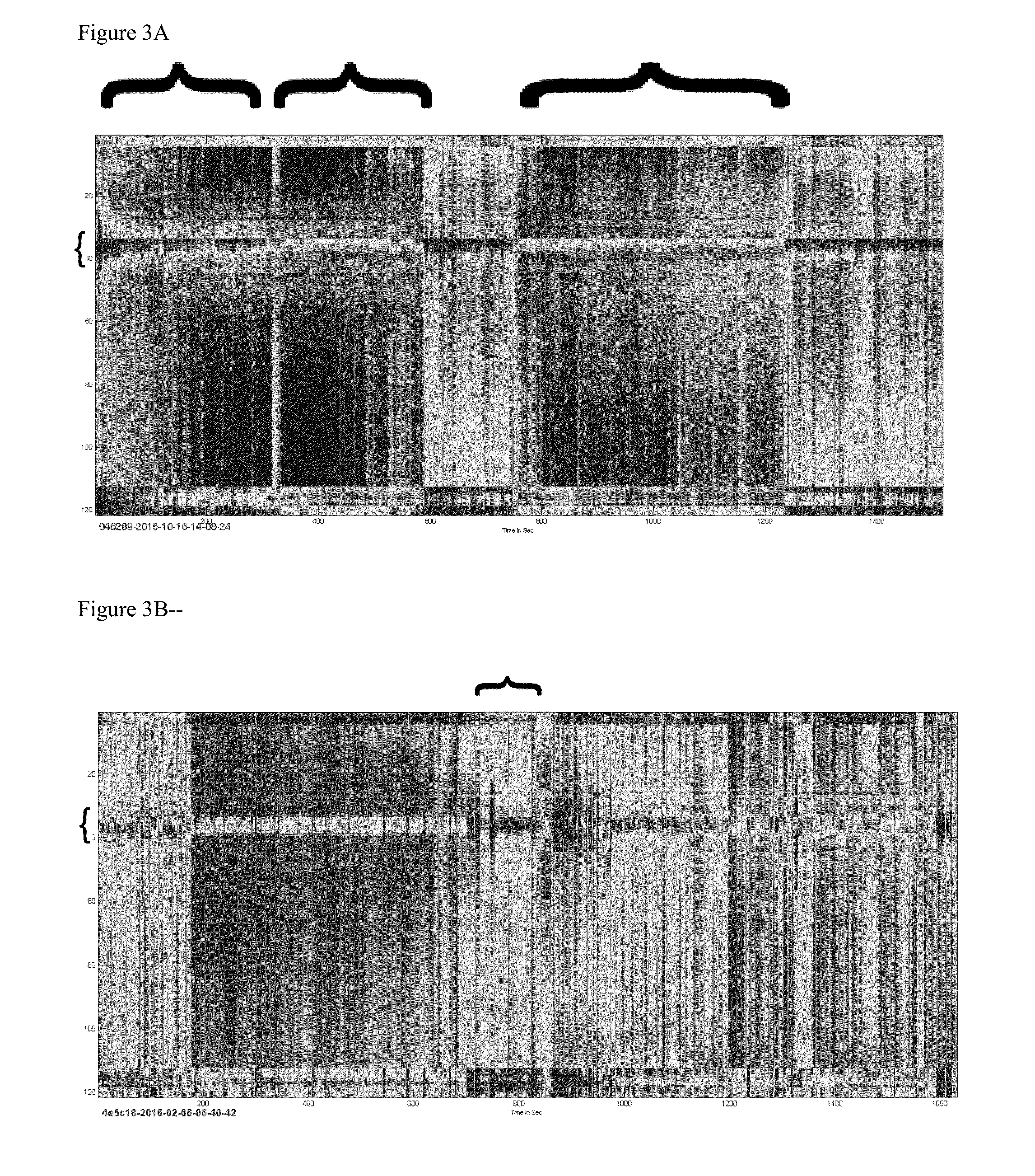Systems and methods for brain activity interpretation
a brain activity and system technology, applied in the field of brain activity interpretation systems and methods, can solve the problems of limiting the spatial resolution of eeg, the large and expensive clinical device of magnetic resonance imager, and the inability to use it outside the clinic, and in a continuous manner
- Summary
- Abstract
- Description
- Claims
- Application Information
AI Technical Summary
Benefits of technology
Problems solved by technology
Method used
Image
Examples
example 1
BAF Representations Obtained from Multiple Subjects Performing Specific Cognitive Tasks
[0256]FIG. 5 shows a BAF representation from 7 subjects. Each raw (Y axis) represents the activity of a single BAF. The color coding is (“hot”) indicating that high activity tends towards red and low activity tends towards blue. Each column (X axis) represents a vector of activity at a specific time frame. Thus, the X axis is measured in time (minutes or seconds). FIG. 5 is measured in minutes. The specific figure represents activity of 6 subjects during a cognitive task. Thus, it is possible to concatenate EEG of different recordings together so that one figure (or matrix of BAF) represents activity of different tasks, or different subjects performing (different) tasks. In this specific figure, the arrows indicate two subjects that have a relatively similar pattern of activity during the task. Thus, this figure represents different cognitive strategies performed during the same cognitive task, pe...
example 2
BAF Representations Obtained from a Subject Watching Three Movies that Elicit Different Emotional Responses
[0257]Brain activity (BAF) during three movies (each recorded at a different time). Referring to FIG. 6, it can be seen that the activity of the second and third movie is more similar in terms of the BAFs that are active, compared with those active in the first movie. The first movie (Derailed) includes violence and horror, while the other two movies (Stolen Life and Skin) are more associated with sadness and warm feelings. The arrows mark the time of strong positive emotional feelings in the two movies. It is evident that the BAFs active at that time are the same. They are also active in FIG. 7 below during meditation.
example 3
BAF Representations Obtained from Seven Subjects Performing E-Learning Tasks
[0258]EEG recordings were obtained from 7 subjects, according to some embodiments of the present invention, whilst the subjects were performing specific e-learning tasks. The BAF representations are shown in FIG. 7. The task included information gathering and then answering questions at two levels of difficulty (this was the same representation from FIG. 5). This was followed by two experienced meditators performing Gayatri Meditation and an inexperienced person performing Japa meditation immediately followed by music listening. The active BAFs during the Gayatri meditation were similar to those that are active during the positive emotional parts in the movies (FIG. 6). There is evidence that experienced meditators demonstrate increased co activation of mPFC, insula, and temporal lobes while reducing the activity of the default mode network. There is also evidence of a sense of happiness.
PUM
 Login to View More
Login to View More Abstract
Description
Claims
Application Information
 Login to View More
Login to View More - R&D
- Intellectual Property
- Life Sciences
- Materials
- Tech Scout
- Unparalleled Data Quality
- Higher Quality Content
- 60% Fewer Hallucinations
Browse by: Latest US Patents, China's latest patents, Technical Efficacy Thesaurus, Application Domain, Technology Topic, Popular Technical Reports.
© 2025 PatSnap. All rights reserved.Legal|Privacy policy|Modern Slavery Act Transparency Statement|Sitemap|About US| Contact US: help@patsnap.com



